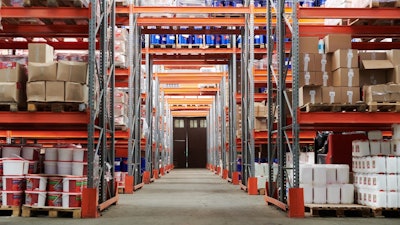
One of the biggest challenges in retail is having the right amount of stock at the right location at the right time. No one wants stock-outs. Managing logistics across multiple channels, aligning inventory, meeting delivery schedules and coordinating with suppliers are just some of the tasks that supply chain managers face within their retail operations. To streamline logistics operations and implement best practices so you have the right inventory at the right location, companies need to:
Embrace automation to reduce manual tasks and eliminate some of the steps in the logistics process, helping orders to get out faster. An intelligent, optimized transportation management system (TMS) automates many of these tasks while lowering transportation costs, improving logistics efficiencies and productivity and providing real-time visibility that enables proactive actions and responses.
Be prepared to handle volatility in demand when sudden fluctuations arise. The ability to scale with flexible logistics operations to handle the demand is a key to success. Work with your suppliers to place more emphasis on demand planning and forecasting to ensure optimal amounts of inventory arrive at the right locations at the right time.
Treat drivers well and pay them fairly, so that when you need them, they will be willing to drive for you. Many drivers want to have a better work-life balance, so use scheduling tools (often built into a TMS) that take into account driver preferences, like the desire to return home after each trip. Make their lives easier by giving them the tools and perks they need to smooth the way for your freight.
Work with reputable carriers dedicated to best practices throughout their operations. Every retail operation needs access to quality carriers responsible for getting products delivered on time, in full and in excellent condition. Create KPIs and measure carriers using scorecards to help improve performance of carriers you work with. Often an open and honest two-way conversation between shippers and carriers is a win-win situation that can lead to a more satisfied relationship.
Embrace green practices. The call for sustainability in fashion has reached a new high, and many retailers are following suit. A TMS can help reduce mileage and fuel usage by optimizing routes. Smart trip planning reduces out-of-route miles and provides the most advantageous stops for fuel and rest. Look for a TMS that will reduce deadhead miles where empty trucks eat up mileage without carrying a load.
Track shipments from start to finish. A TMS can monitor ELDs, telematics and GPS devices to show the status of all shipments and will send alerts to management if any delay occurs. Being proactive if there is an issue and resolving it quickly leads to happy customers.
Use mobile tools that allow drivers to upload critical documents. This speeds invoicing and settlement, allowing you to send a bill within hours of delivery and shorten the time to receive payment. Proof-of-delivery mobile apps help improve customer satisfaction for last-mile deliveries. Drivers take pictures of the delivered product to prove the order arrived safely. Some mobile apps provide turn by turn directions for drivers, helping to speed deliveries.
Use a TMS with address verification. As you type in the address, the TMS can verify the address to make sure it is a valid address with the right zip code. This reduces errors and speeds processing.
Run what-if scenarios with analytics tools that factor loads, origins/destinations, hours of service (HOS) and real-world ETAs to see how assigned drivers’ current and future load routes mesh with your strategic goals and KPIs. The goal is to develop a step-by-step plan defining where drivers need to go for their pickups and deliveries and enabling them to automatically stay compliant with their HOS requirements.
Coordinate inbound shipments to eliminate crowded docks and long lines in the yard. Communicating with truckers prior to their arrival will reduce time spent in the yard or at dock doors. A mobile driver’s app can show them their assigned loads, dock door location and appointment times so that drivers don’t waste time driving around the yard.



















